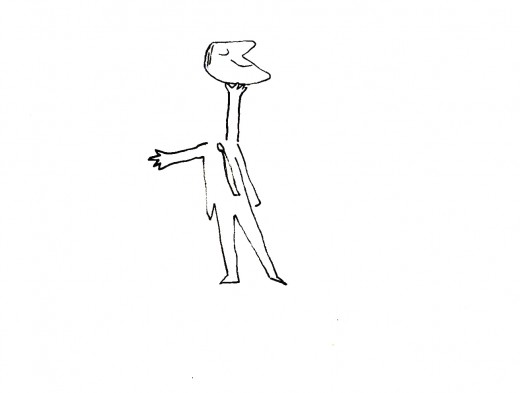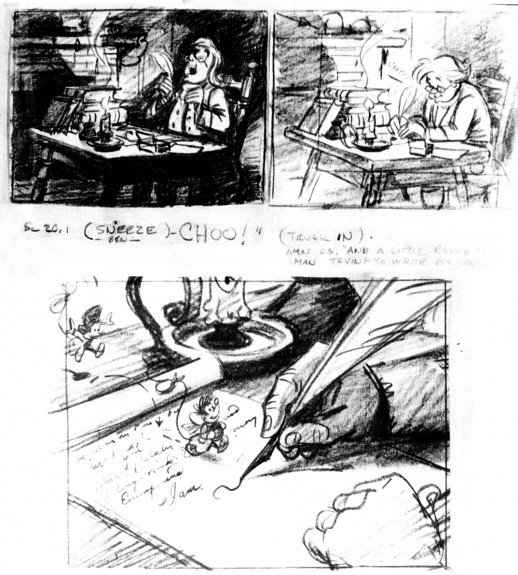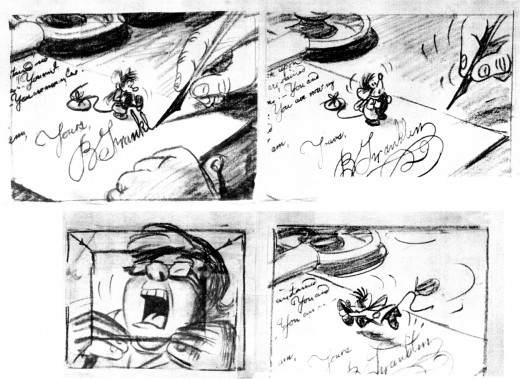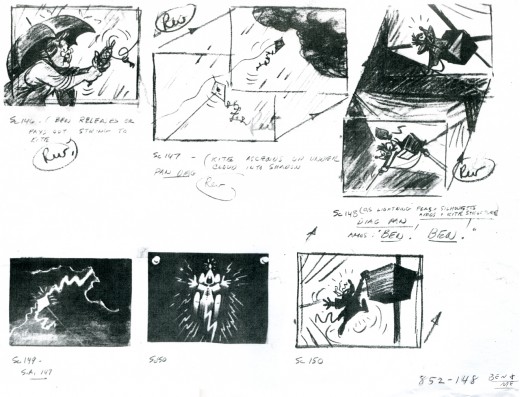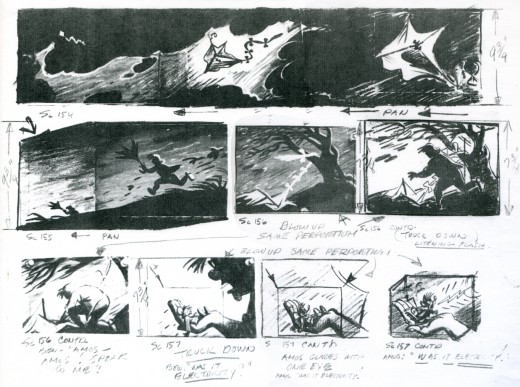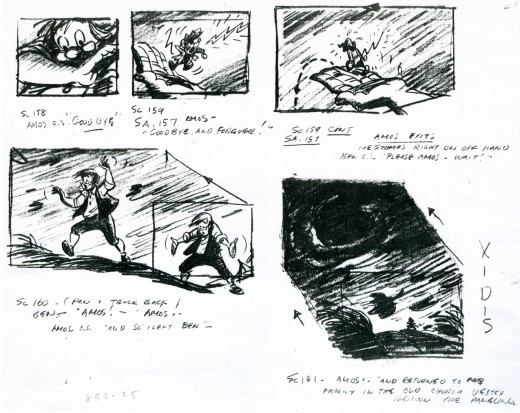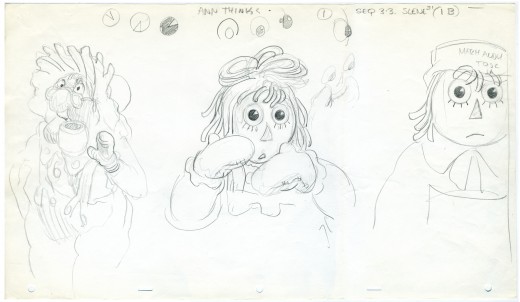Category ArchiveLayout & Design
Animation Artifacts &Disney &Layout & Design &Story & Storyboards 02 Oct 2008 07:38 am
Melody Art
- When posting the storyboards from Melody: Adventures In Music, that were loaned me by John Canemaker, last Monday I mentioned that John had also offered some artwork from the film – color keys and story sketches. I’ll post these in two parts: the first here, the second next week after completing the board.
Unfortunately, I don’t know who the artists were that painted these.
Eyvind Earle is credited as Color Stylist; Ken O’Connor and Victor Haboush were credited for Art Direction.
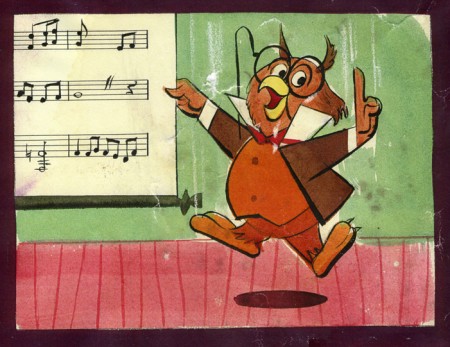
(Click any image to enlarge.)
To be concluded next week.
.
You can find frame grabs from this short on Ward Jenkins‘ site, The Ward-O-Matic.
MELODY is included in the Walt Disney Treasures: Disney Rarities dvd set and it is also found in the bonus features of the Fantasia 2000 dvd.
The film is also on YouTube (at the moment) in not the best condition.
Disney &Layout & Design 25 Sep 2008 08:14 am
Pin Moments – 3
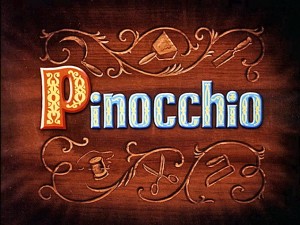 - Any devotee of the Multiplane Camera knows this scene in Pinocchio. It’s a jaw dropper. Despite the many dozens of times I’ve seen the film on screen (not mention on dvd or video), the scene is spine tingling. I thought it’d be fun to grab frames from the piece and display them. The animation for this sequence is by: John McManus, Jack Campbell, Cornett Wood, and John Reed.
- Any devotee of the Multiplane Camera knows this scene in Pinocchio. It’s a jaw dropper. Despite the many dozens of times I’ve seen the film on screen (not mention on dvd or video), the scene is spine tingling. I thought it’d be fun to grab frames from the piece and display them. The animation for this sequence is by: John McManus, Jack Campbell, Cornett Wood, and John Reed.
I’ve gone a step further and have taken the scene that follows it where the newborn Pinocchio greets the real world (and life) for the first time. There’s some fine character animation there by Art Babbitt (Gepetto), Milt Kahl (Pinocchio), Don Lusk (figaro), and Sandy Strothers (Effx).
I urge you to read Mark Mayerson‘s Mosaic and comments on this sequence.
likewise, I urge you to read the excellent info Hans Perk has posted about the Multiplane Camera on his site, A Film LA.
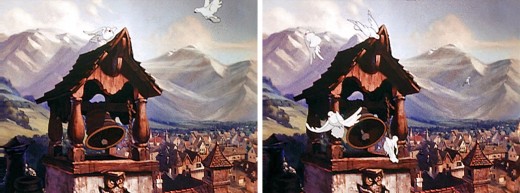
(Click any image to enlarge.)
Disney &Layout & Design 09 Sep 2008 07:54 am
Pin Moments 2
- Here’s a bit of a breakdown of one of my favorite scenes in Pinocchio during the “Actor’s Life For Me” song. The background and all the overlay/multiplane elements rotate during the move.

(Click any image to enlarge.)

The above two images came from John Canemaker ‘s book
Treasures of Disney Animation.
Here are frame grabs from the scene:
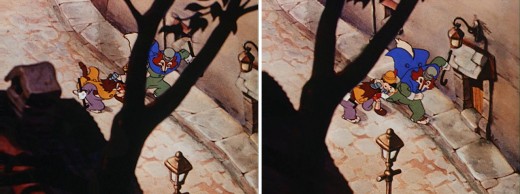
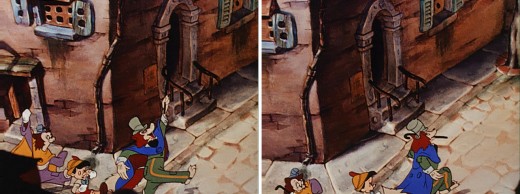
How daring for them to have the characters mostly obscured by foreground buildings
or walking off the bottome of the screen. Walt was ultimately the one who made
this decision, but a lot of other people did it along the way.
Here’s a QT movie of the frame grabs represented above – it offers a different way of viewing what’s going on in the actual scene.
not true to actual speed.
Animation &Animation Artifacts &Disney &Layout & Design 19 May 2008 08:44 am
A Couple of Fantasia Layouts
- I have a few really down and dirty older xeroxed copies of layouts for some Fantasia scenes. Without defining what they are, I thought I’d just post them and let you figure them out. When I have the folder info, I post that as well so you can see who did what.
I follow the LO’s of each scene with frame grabs from that scene.
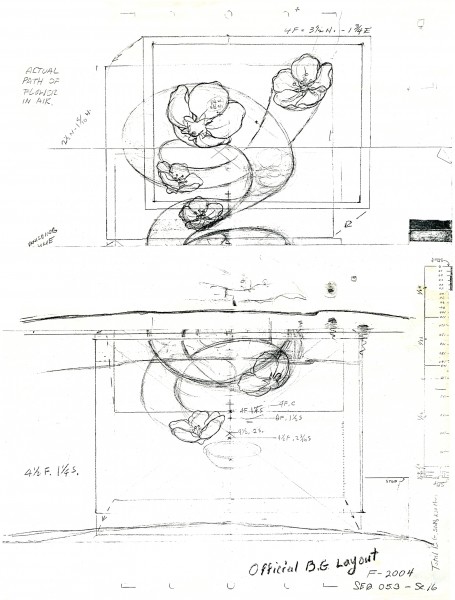
___Falling flowers land on water. Unfortunately, a small part of the
midsection for this drawing is missing. The xeroxes, of course,
are all large and reconstructing them was a bit complex.
The BG layout is below.
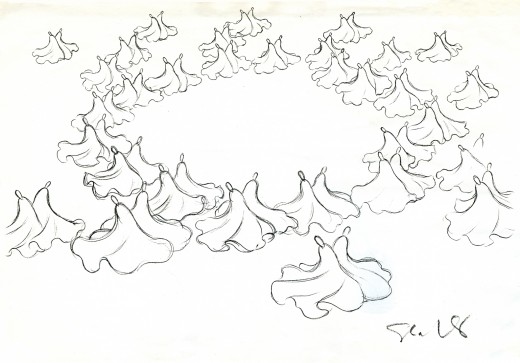
These two drawings represent twirling blossoms as well as
the perspective planning for them and the background for the scene.
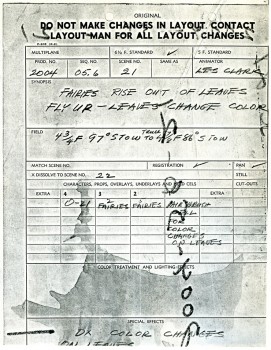
The following two long pans show a background of leaves and the
progression of Faeries that sparkle around those leaves.
Animation Artifacts &Disney &Frame Grabs &Layout & Design &Story & Storyboards 12 May 2008 08:05 am
Baby Mine Breakdown
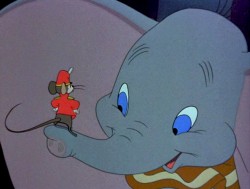 - Dumbo is certainly one of my favorite Disney features if not THE favorite. Naturally, the “Baby Mine” sequence is a highlight. The sequence is so tender and fine-tuned to appear straightforward and simple. This, of course, is the heart of excellence. It seems simple and doesn’t call attention to itself.
- Dumbo is certainly one of my favorite Disney features if not THE favorite. Naturally, the “Baby Mine” sequence is a highlight. The sequence is so tender and fine-tuned to appear straightforward and simple. This, of course, is the heart of excellence. It seems simple and doesn’t call attention to itself.
This is a storyboard composed of LO drawings from the opening of that sequence. They appear to be BG layouts with drawings of the characters cut out and pasted in place.
It’s not really a storyboard, and I’ve always wondered what purpose such boards served to the Disney machine back in the Golden Age.
Below is the board as it stands in the photograph.

_____________(Click any image to enlarge.)
Here is the same photographed board, split up so that I can post it in larger size. I’ve also interspersed frame grabs from the actual sequence for comparison.
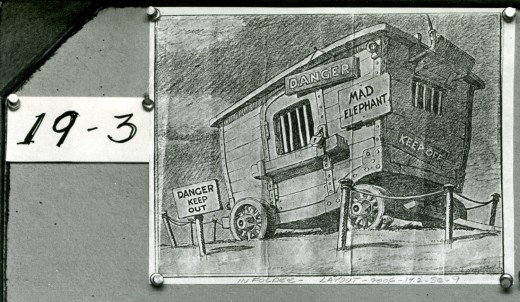
Daily post &Layout & Design &UPA 10 Apr 2008 08:26 am
Shirley Silvey’s King & Joe
On March 6th, I posted a piece on the UPA short, The King and Joe. This film was done for television as part of the Gerald McBoing Boing show. I wrote a very brief piece about it and conjectured that the art was inspired by Paul Klee. (I had – and still have – a specific painting in mind which almost exactly matches a pan from the film. However, I haven’t been able to find a copy of that painting.) Boy, was I wrong.
I received this note from Shirley Silvey, one of the designers of the film, and I’d like to post it. I hope that meets her approval.

A color still from Amid Amidi’s great book, Cartoon Modern.
He credits director: unknown. Now, we know the director’s name.
My name is Shirley Silvey and I worked on “The King and Joeâ€. In 1956, near the end of the Gerald McBoing Boing Show, UPA hired Ed Levitt, a well known director/storyboard/layout and design artist to do some shorts. Ed wanted me to work with him, so I was hired as well. While Ed was a veteran in animation, I was a novice. With the two of us and two animators together in the same room, we started on the first short entitled “The King and Joeâ€.
As far as the short itself, you questioned whether it was any good. We never thought or considered Klee for reference. As soon as we began, I purchased a book (published 1929) entitled “History of Ancient Persiaâ€. I used the book’s photos of the sculptures and bas-relief that was created during the reign of the Persian Achamedian kings andI used the 1929 landscapes of Iran as my only references.
The length of the short was determined by its song that had been recorded before we started. I do remember the long pan you commented on. Klee? No. I just drew highly designed arab tents and sand dunes. In regards to “Magoo’s 1001 Arabian Knightsâ€, I did layout, storyboard and character development under the art director Bob Dranko and animation director Abe Levitow.
I hope this explanation will exorcise the short from your brain. The King and Joe was just a little cartoon created by 2 artists who had fun doing it.
Regards,
Shirley Silvey
(I’d also written a snide comment in my original post saying that the film has haunted me for years and hoped writing extensively about it would “exorcize the film from my brain.” That’s her reference, and I deserved it.) The film was more than a “little cartoon” but still survives and compares well to most of the mediocre material done today.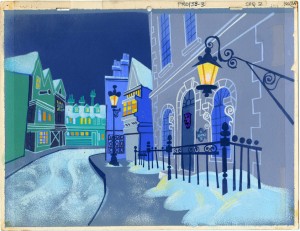
There’s an excellent interview with Shirley Silvey at the Toonarific Cartoons. The focus of the interview seems to be her work at Jay Ward’s studio, Bullwinkle and Hoppity Hooper, but there’s quite a bit more about work with Abe Levitow and UPA.
Several of her BG layouts appear on the new Abe Levitow site. One of these appears to the right.
See Magoo’s Christmas Carol and 1001 Arabian Nights.
__________________________________BG Layout – Shirley Silvey / Painting – Bob Inman.
Animation Artifacts &Layout & Design &repeated posts &Story & Storyboards 21 Mar 2008 08:03 am
Recap Friday – Jax Beer commercial
- In November 2006 I posted the storyboard, workbook and final layouts for a Jax Beer spot which was directed by Mordicai Gerstein. I thought it interesting enough to recap the two posts, so here they are.
- This is the material for a Jax Beer commercial. It was done by a NY studio named Pelican in 1962. There were about 75 people on staff at Pelican back then.
This spot was directed by Mordi (Mordicai) Gerstein. He left animation in th 70′s to write & illustrate children’s books. (He won the Caldecott Medal for his book, The Man Who Walked Between The Towers. This was the book I adapted to animation in 2005.)
What follows is the storyboard and the director’s workbook. (It appears to be an agency board, though it’s drawn in a style that looks to be Mordi Gerstein’s. Perhaps boards from the agency were drawn by the studios back in 1964; I’m not sure. The layouts were drawn by the same artist.)
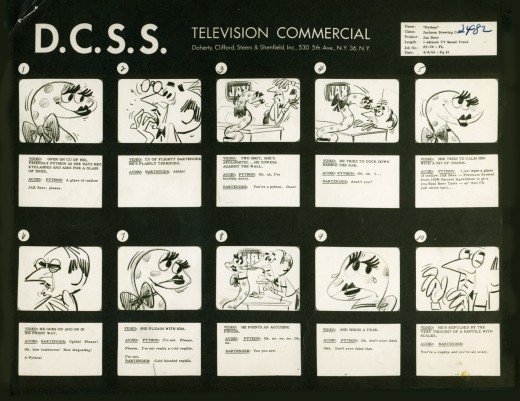
_____(Click any image to enlarge.)
The workbook has several flaps on it that indicate changes in timings. There are also glue stains where I assume other flaps fell off. (See page one, last row, first column.) Each column represents 16 frames/one foot of film. Odd numbers are marked off.
Each row contains 8 feet of film/128 frames. Each page represents 32 feet/512 frames. It would have been smarter to keep to even numbers.
More modern exposure sheets generally have 80 frames/five feet per page. This also divides into two feet of 16mm film. (Handy.) The numbers add and divide smartly and easily. But then most people don’t use exposure sheets anymore.
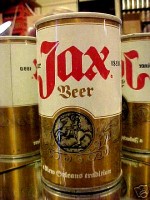 - Continuing with the above post, a Jax Beer commercial, I present some of the film’s layouts. This represents about 2/3 of them.
- Continuing with the above post, a Jax Beer commercial, I present some of the film’s layouts. This represents about 2/3 of them.
The art was done by Mordi (Mordicai) Gerstein, who also directed the spot. Grim Natwick animated the spot and Tissa David assisted him. Of course, this was in the days before auido tapes could be handed out, so the animator would get a phonograph of the soundtrack. They could mark it with a white pencil to indicate key spots.
I thought that this in conjunction with yesterday’s prep material gave a good indication of the preproduction that went into making a commercial back in 1962.
That said, here are the layouts:

(Click on any image to enlarge.)
Animation Artifacts &Layout & Design 07 Mar 2008 09:24 am
Recap Fridays: Steig Lay Outs
- I initially posted these Steig Lay Out drawings in February 2006. They’re important enough (to me at least) for me to re post them. I’ve reshaped the images for better viewing.
These are some of the layout drawings done by William Steig for an Alka Seltzer commercial produced in the early 60′s.
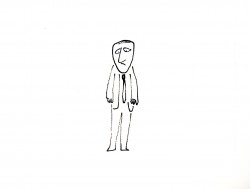 2
2 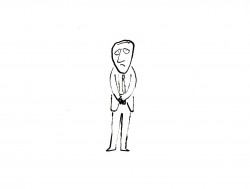 3
3
_________(Click any image to enlarge.)
The commercial was done by Elektra Studios. Steig worked with a bamboo reed cut to form a point. He dipped that in ink and drew. The paper is particularly thick and is designed to absorb the ink. They’re punched with Oxberry peg holes top and bottom. I have one of the “pens” he used to draw these layouts. The final comercial was basically an ink line drawing against a white field.
I’ve been a big fan of Steig‘s since my earliest days when I first discovered him in the New Yorker Magazine. By the time I’d made it to college, I’d already seen two art exhibits of his artwork.
By the time I saw my third exhibit of his work, I was able to barely afford one of the New Yorker drawings. It’s done on rice paper with the same type of “pen”. Years later, when I told Steig that I’d bought it, he said that it was the only drawing to have sold at that exhibit.
It was real luck for me to have been able to adapt a couple of his children’s books to animation. I not only got to meet him and his wife, Jeanne, but worked with his flutist son, Jeremy, on a number of projects.
Bridget Thorne, who art directed the film, did some of her finest work ever on the backgrounds – beautiful pieces that I still treasure. I think this is one of Steig‘s best books, and I think we did it justice. 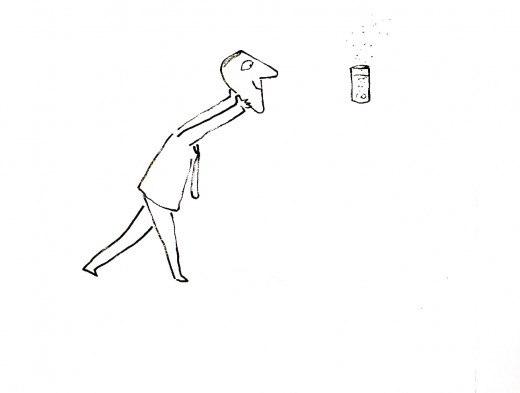
I’m rather partial to Abel’s Island as a film. There were only about two dozen B&W pen and ink illustrations in the book, so we had to do quite a bit of designing in the style of Steig
Animation Artifacts &Disney &Layout & Design &Peet &Story & Storyboards 05 Nov 2007 08:50 am
Ben & Me II
 – This is the second of two posts on the Bill Peet storyboards for the Disney film, Ben and Me. This section, loaned to me by John Canemaker, comes in a xeroxed form – lots of grays – and taped together in a long sheet. I’ve split it up a bit to make it easier to post. I’ve also worked with it a bit to make it more visible thanks to Photoshop.
– This is the second of two posts on the Bill Peet storyboards for the Disney film, Ben and Me. This section, loaned to me by John Canemaker, comes in a xeroxed form – lots of grays – and taped together in a long sheet. I’ve split it up a bit to make it easier to post. I’ve also worked with it a bit to make it more visible thanks to Photoshop.
Bill Peet offered great drawings in his storyboards, and I’m sure he brought a lot of inspiration to the animators.

This is an excedingly long pan (30 inches), and is almost invisible in this minimal thumbnail. Rather than break it up into shorter bits, I’m posting it as is and hope it won’t be too much of a problem for you to follow in its enlarged state. You have to click on it to see it.
The image below is a recreation of this pan from the final film done using multiple frame grabs.
There’s an excellent article about the making of Ben and Me by Wade Sampson at Jim Hill Media. It gives quite a bit of information about this odd short and is well worth reading as a companion to these boards.
Animation Artifacts &Layout & Design &Richard Williams &Story & Storyboards 17 Aug 2007 07:41 am
30 Raggedy Years
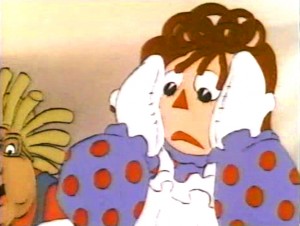 – Tom Sito‘s blog, yesterday, reminded me that it was the 30th anniversary of the release of Raggedy Ann & Andy:A Musical Adventure .
– Tom Sito‘s blog, yesterday, reminded me that it was the 30th anniversary of the release of Raggedy Ann & Andy:A Musical Adventure .
To quote Tom’s blog:
___ASIFA/Hollywood is planning
___to have a reunion of the crew of
___Raggedy Ann to celebrate the
___anniversary. It will be at the
___American Film Institute in
___Hollywood on November 17th.
___A simultaneous reunion will
___happen in New York City. A lot of wonderful people worked on this film, many getting
___their first start.
This gives me a good reason to post some artwork from this film in the next few months. So, excuse me if you find it annoying to see artwork from a second rate feature. However, this was a seminal film for a lot of talented people who got a chance to work along some of the masters.
Just check out this list of animators on the film:
_____Hal Ambro, Art Babbitt, George Bakes, John Bruno, Gerry Chiniquy,
_____Tissa David, Emery Hawkins, John Kimball, Chrystal (Russell) Klabunde,
_____Charlie Downs, Grim Natwick, Spencer Peel, Willis Pyle, Jack Schnerk,
_____Art Vitello, Carl Bell and Fred Hellmich left mid-production.
_____Gerry Potterton was the consulting Director.
_____Cosmo Anzilotti was the Asst. Director.
_____Corny Cole was the designer of the film.
These were some of the younger upstarts inbetweening and assisting:
_____Bill Frake, Jeffrey Gatrall, John Gaug, Eric Goldberg, Dan Haskett, Helen Komar,
_____Judy Levitow, Jim Logan, Carol Millican, Lester Pegues Jr, Louis Scarborough Jr,
_____Tom Sito, Sheldon Cohen and Jack Mongovan.
_____I supervised assistants and inbetweeners in NY,
_____Marlene Robinson did that job in LA.
If you don’t know who these people are, trust me they were the backbone of the business for many, many years prior to 1976.
In some ways I think this along with some of the Bakshi and Bluth films led directly toward the rebirth of animated features. There was a long dark period before it.
So to start with the artwork.
This is a scene which immediately follows the Pirate kidnapping Babette.
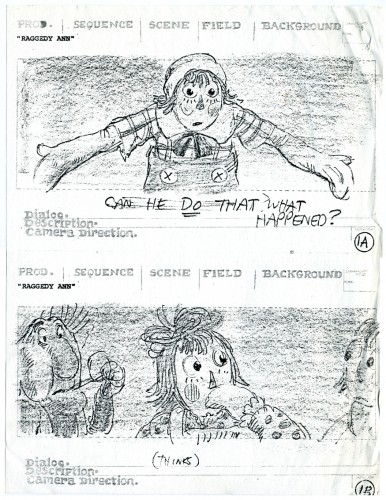
Here’s the storyboard for the two scenes. It’s a copy of
Corny Cole’s drawing from the director’s workbook.
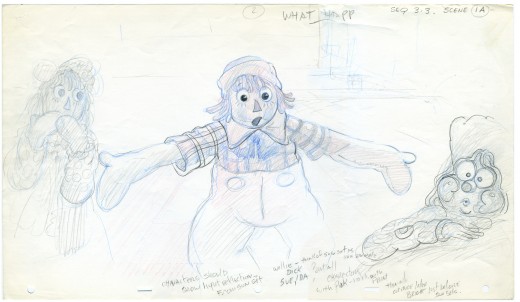
This is Corny Cole’s layout for Sc. 1A.

Here we have Dick Williams’ reworking of the same pose.
Fred Hellmich originally animated this, but Dick Williams redid the entire sequence, and
Fred left the film.
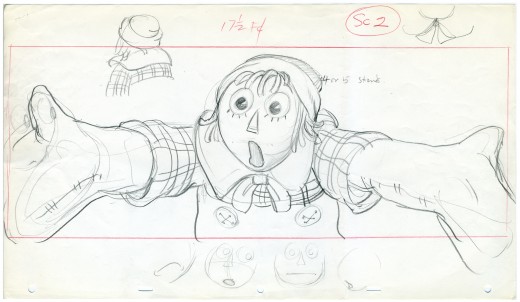
Cut back to Andy (as drawn by Dick Williams) for Sc. 2.
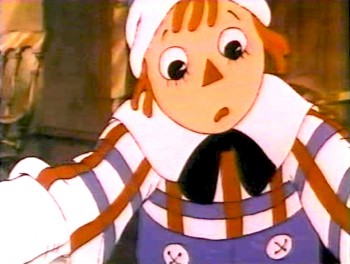
How small it all gets on a pan and scan video.
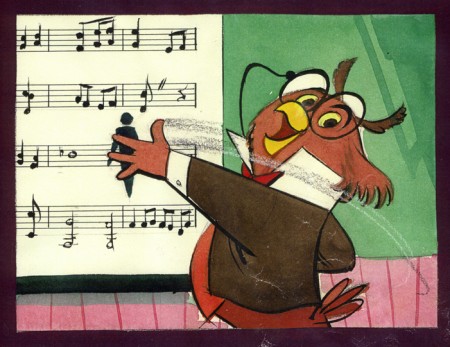
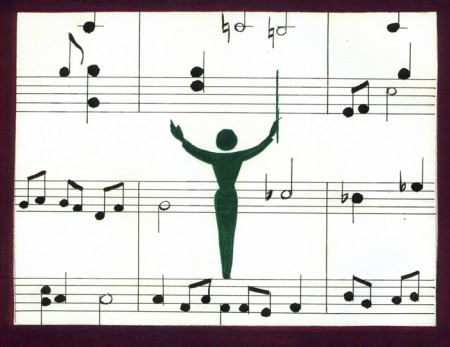
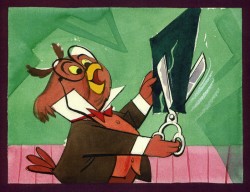
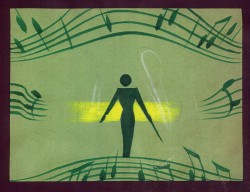
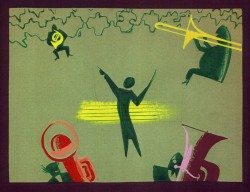
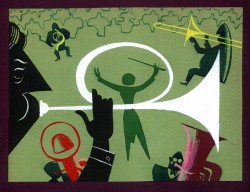
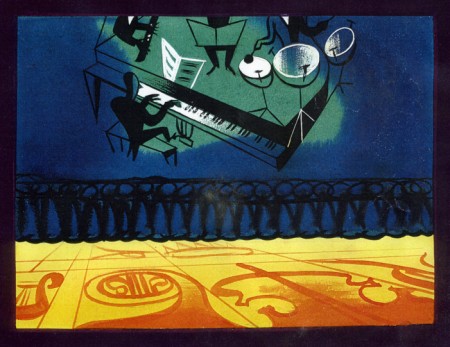


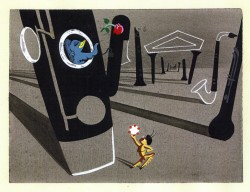
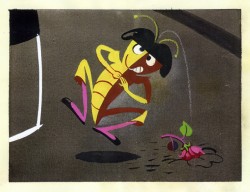
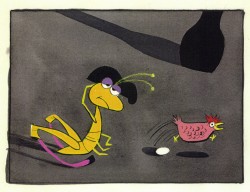
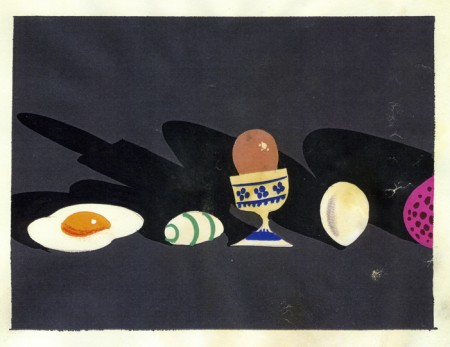
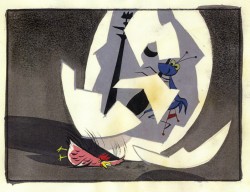
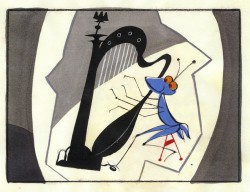
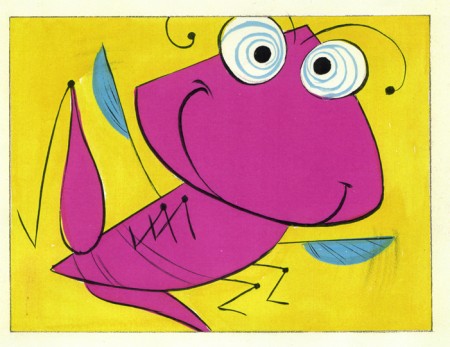
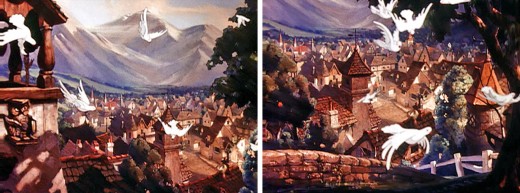
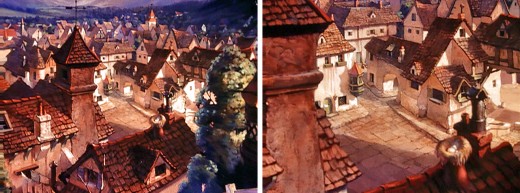

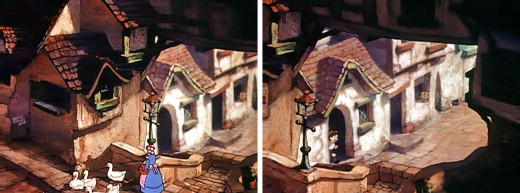
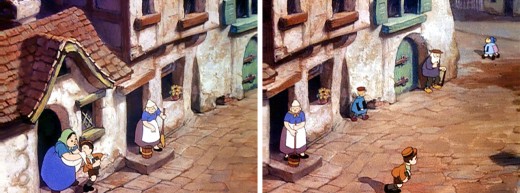
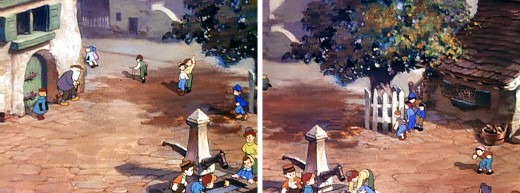
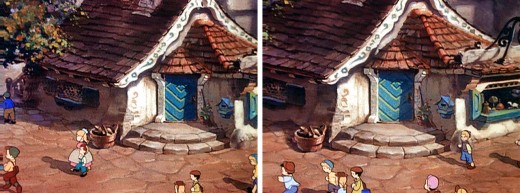
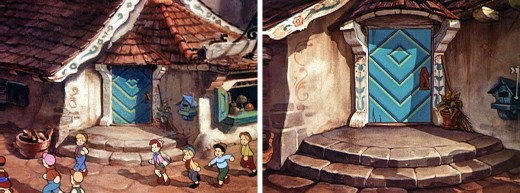
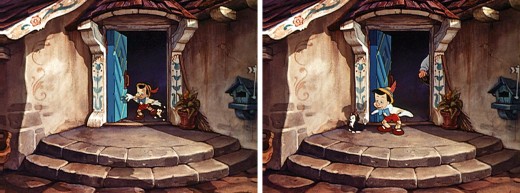
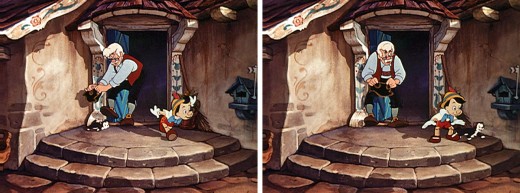
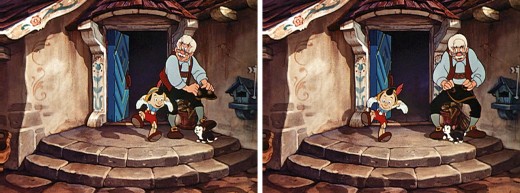
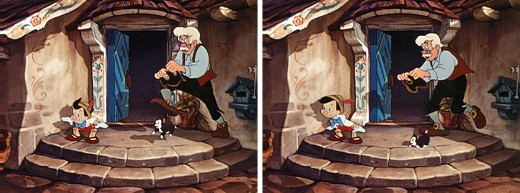


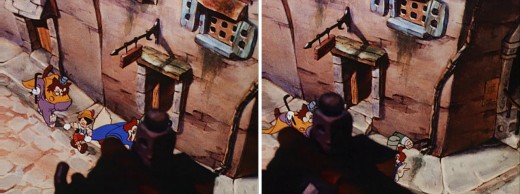
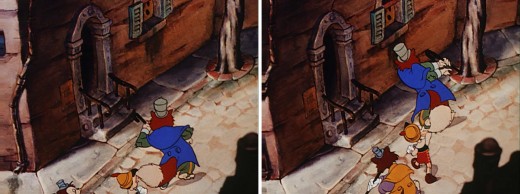
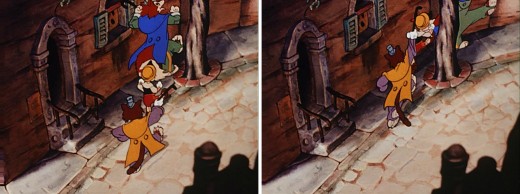

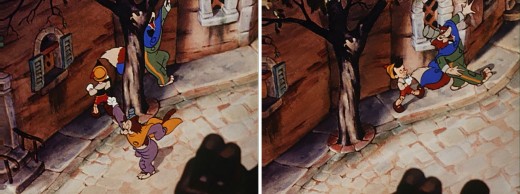
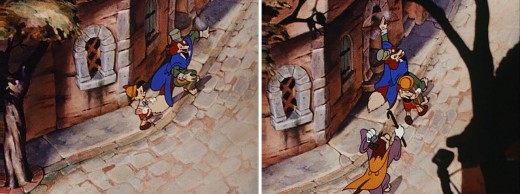
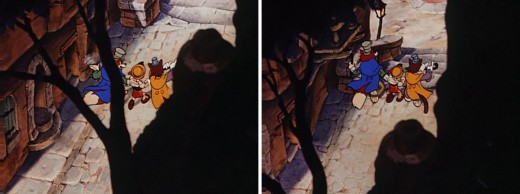
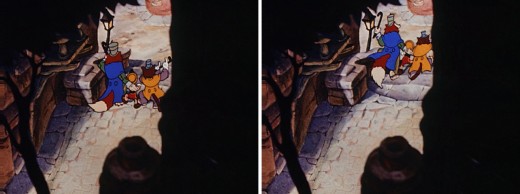
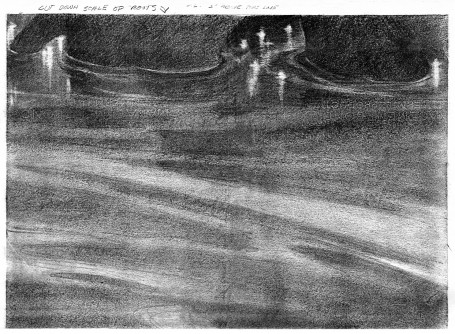
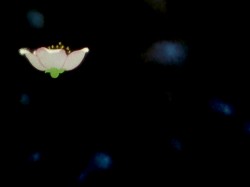
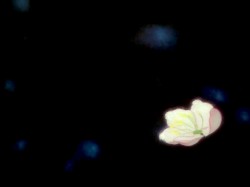
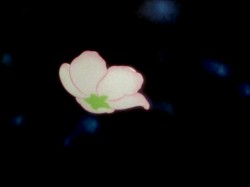
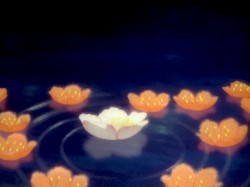

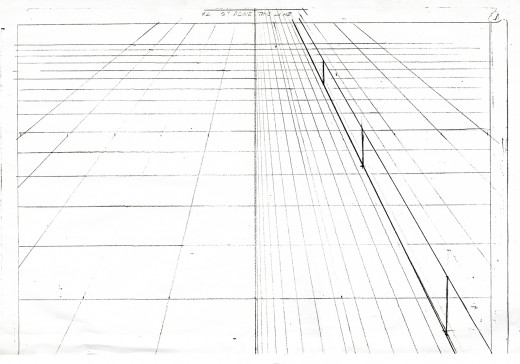
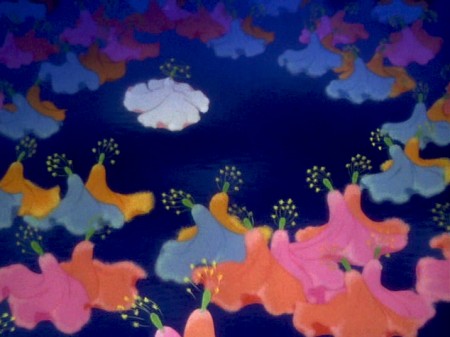


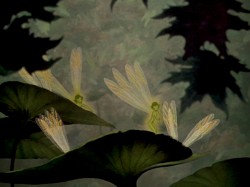
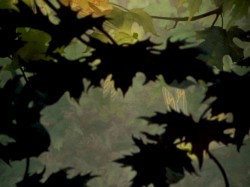
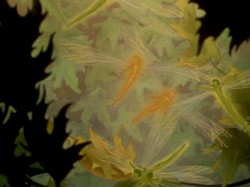
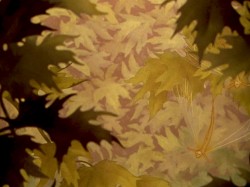
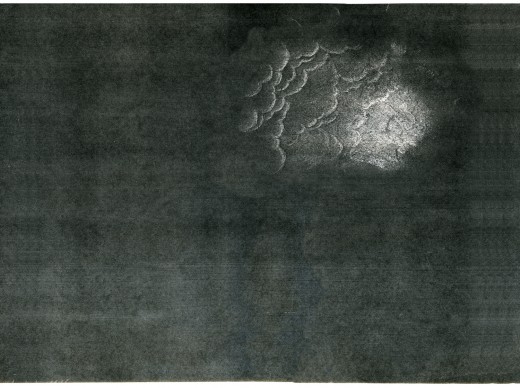
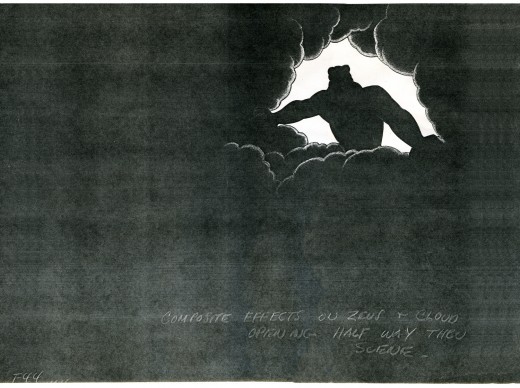

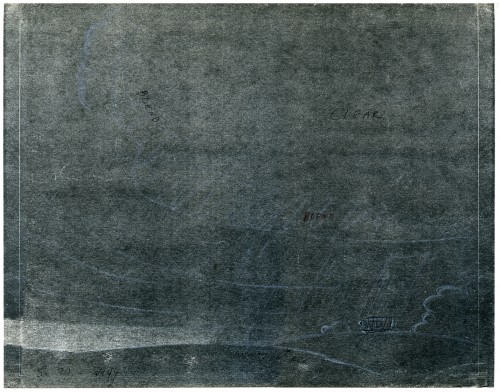
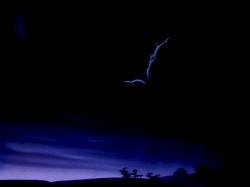
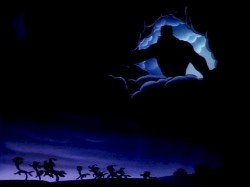
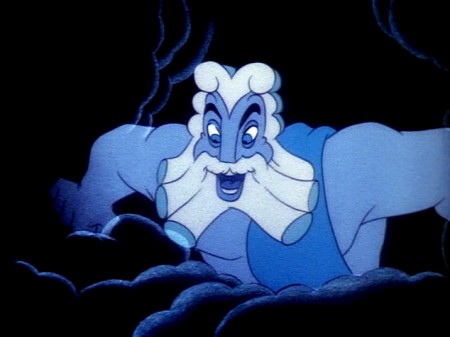
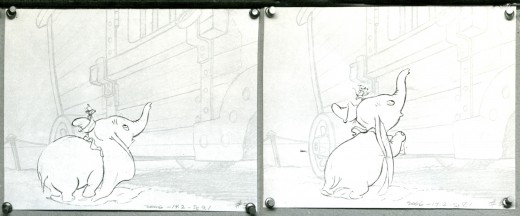


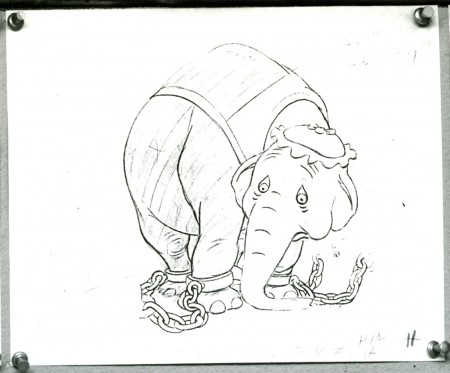



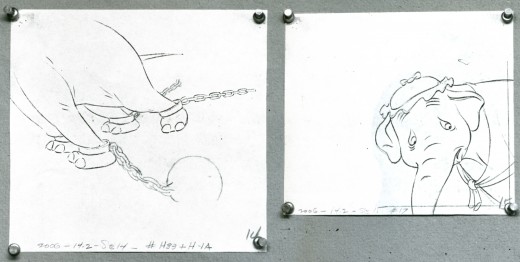

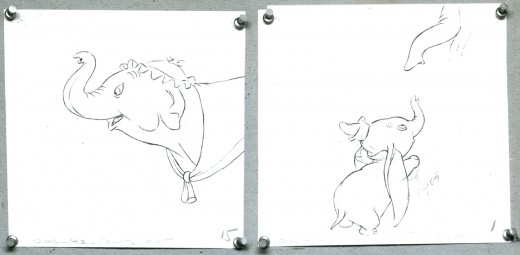
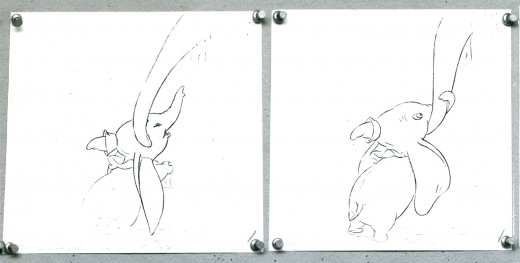

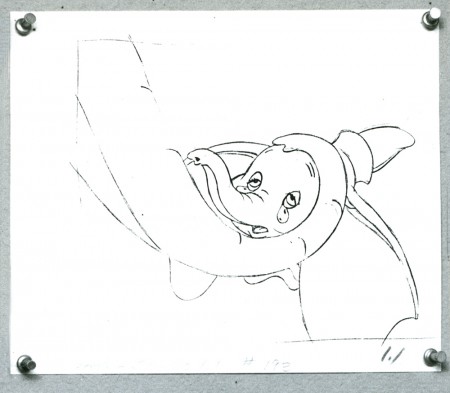

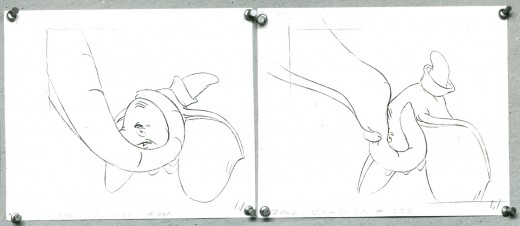

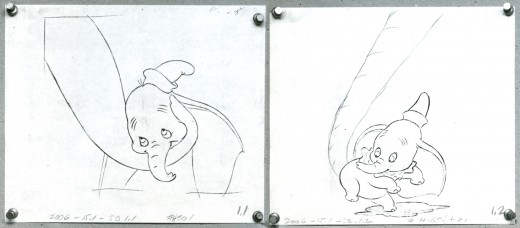
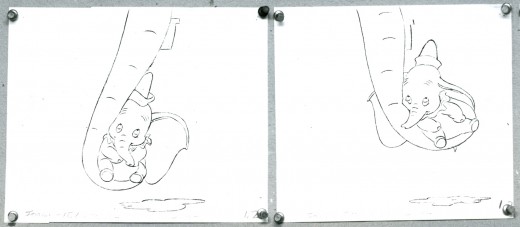

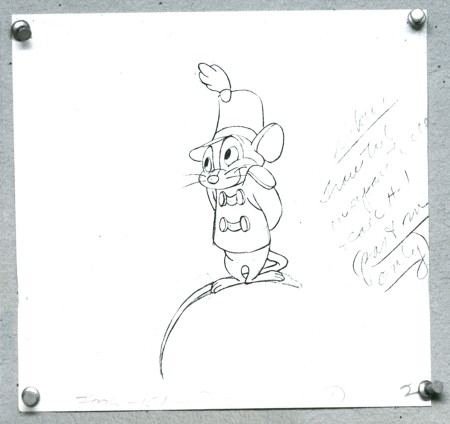
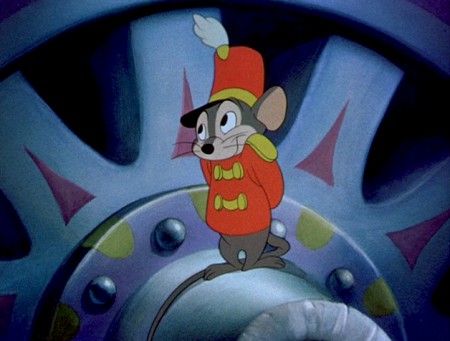
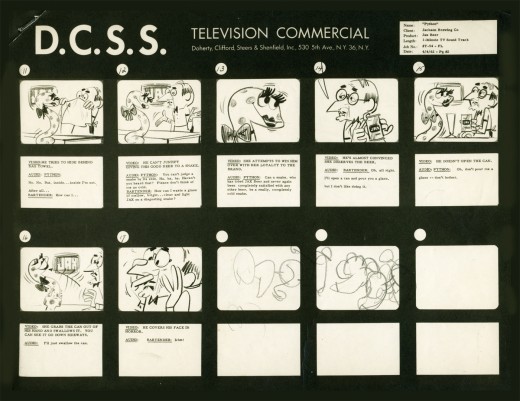
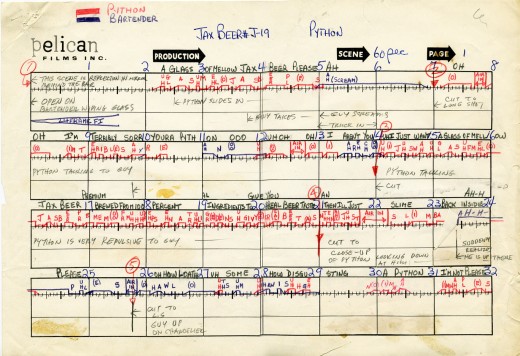
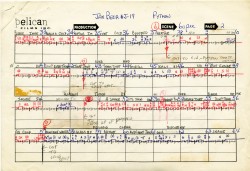
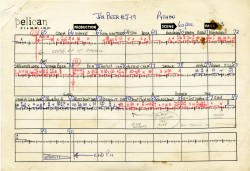
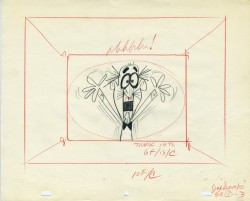
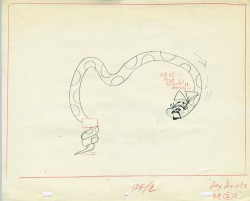
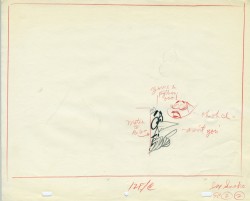
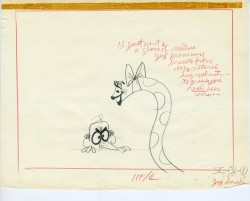
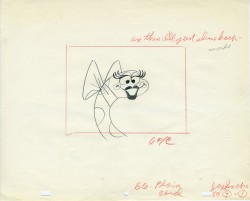
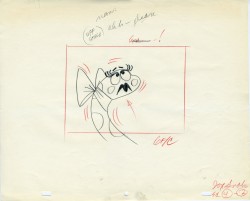
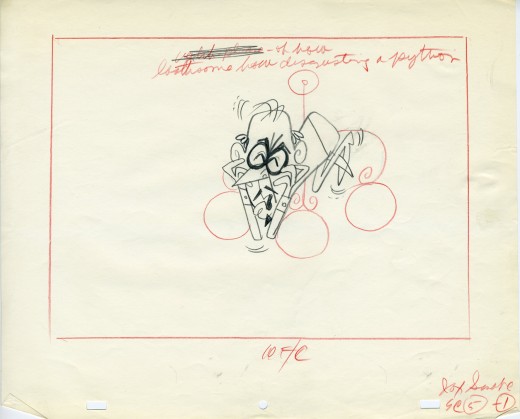
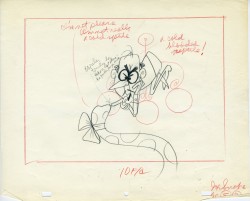
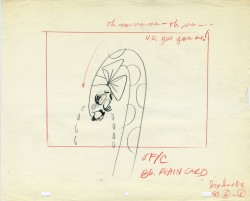
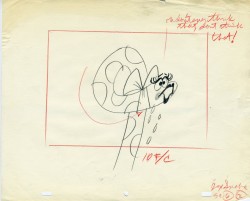

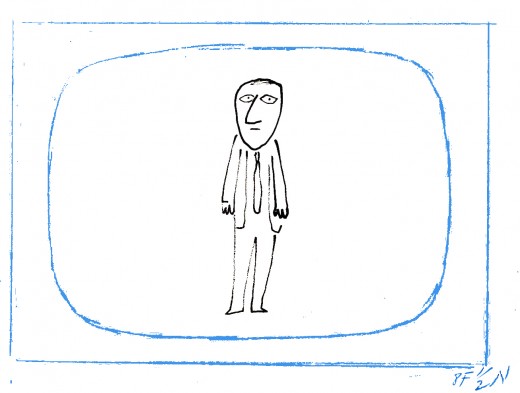
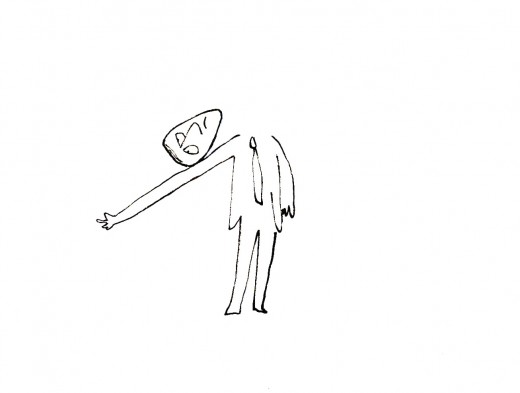
 7
7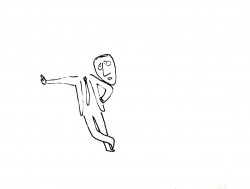 9
9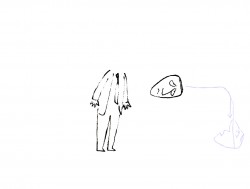 12
12 13
13 15
15 17
17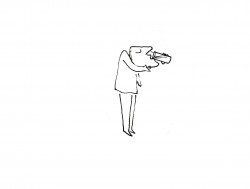 24
24 27
27